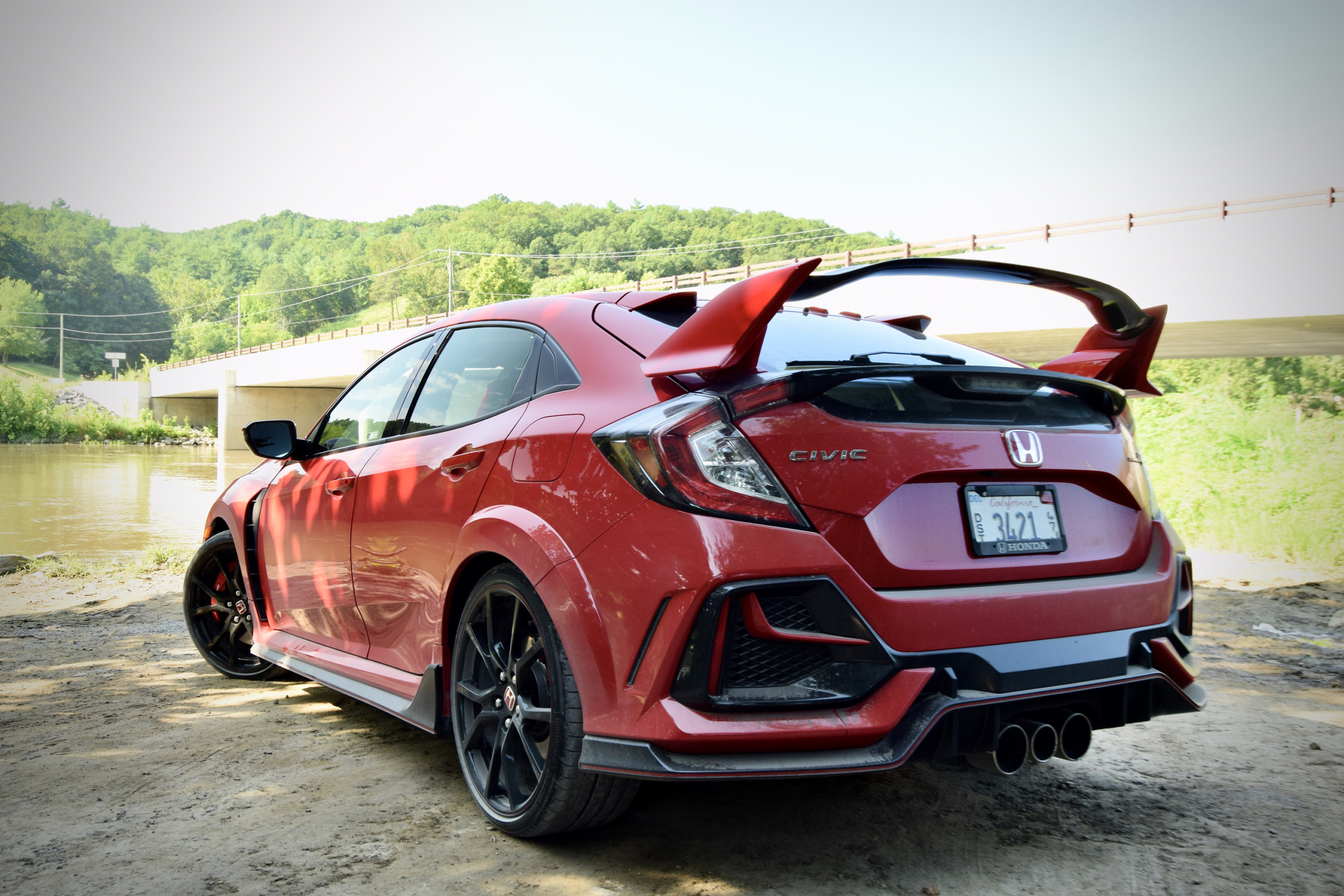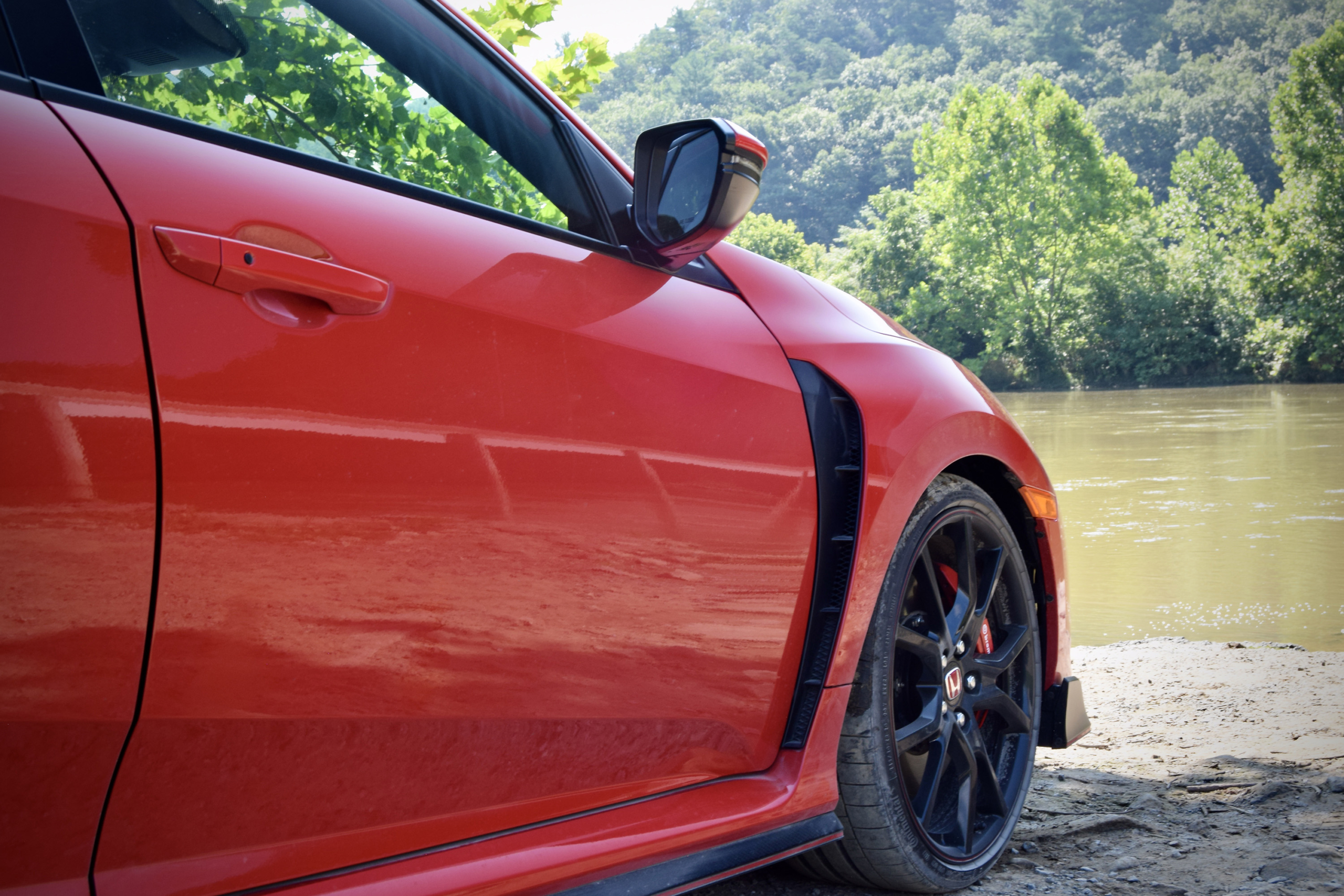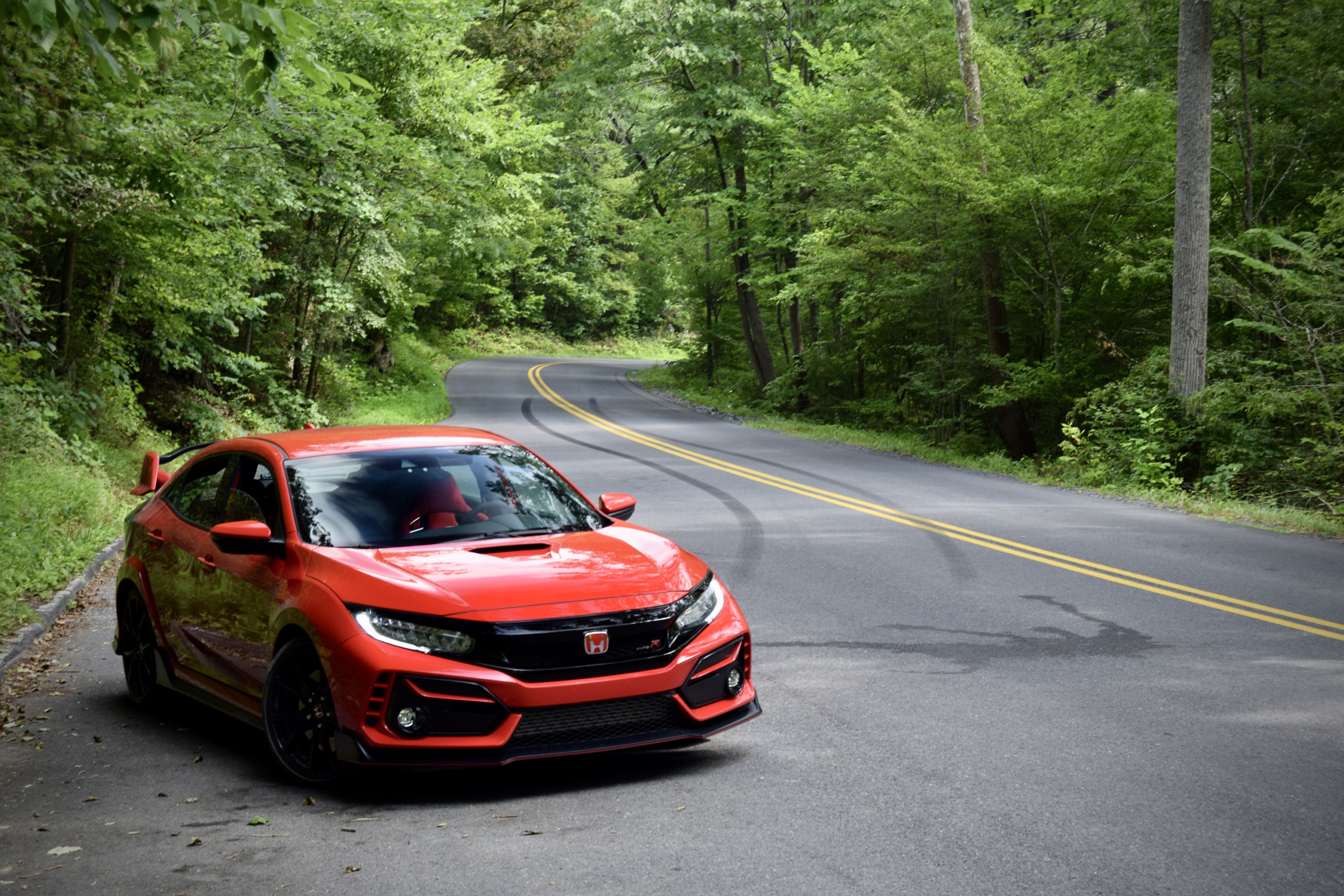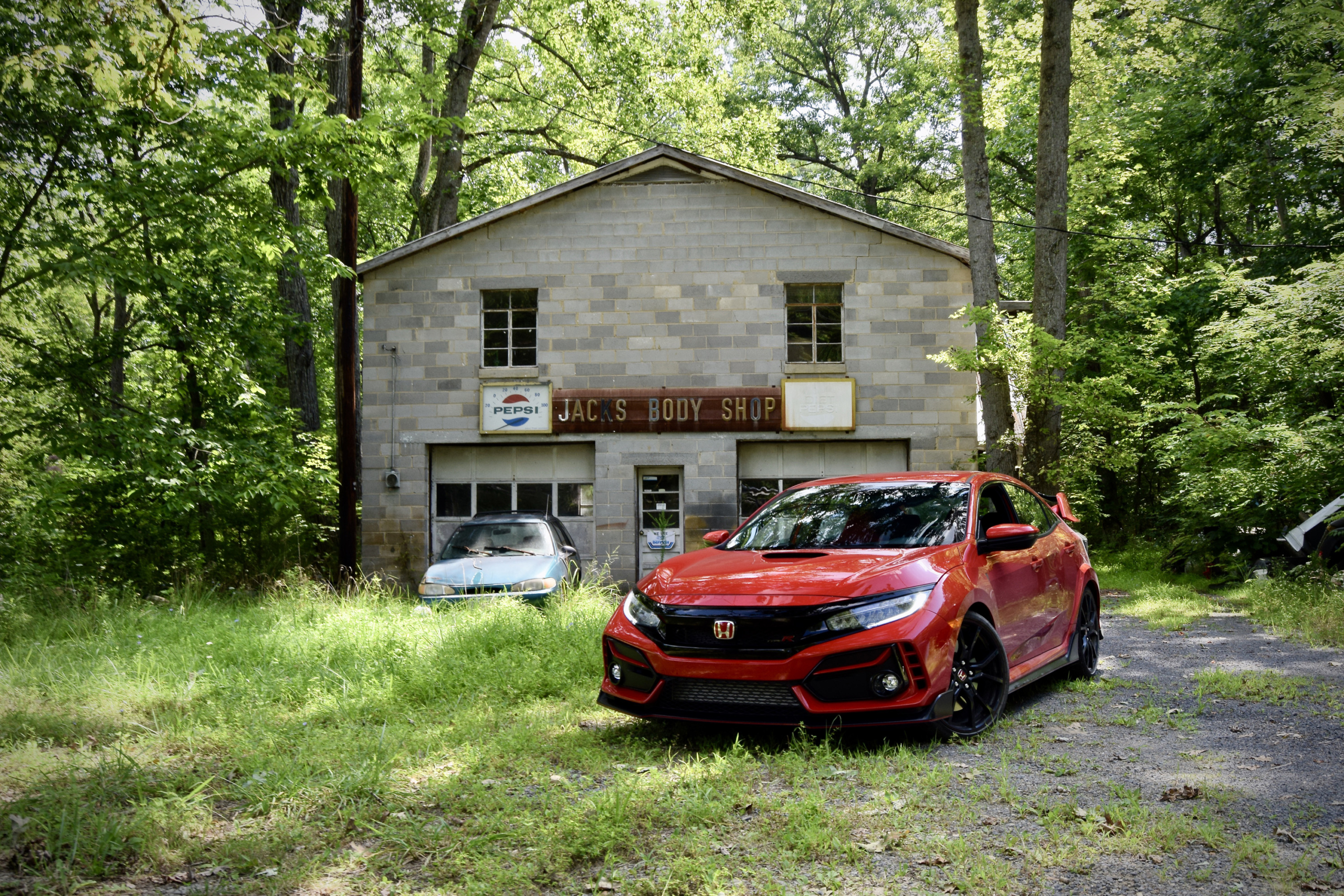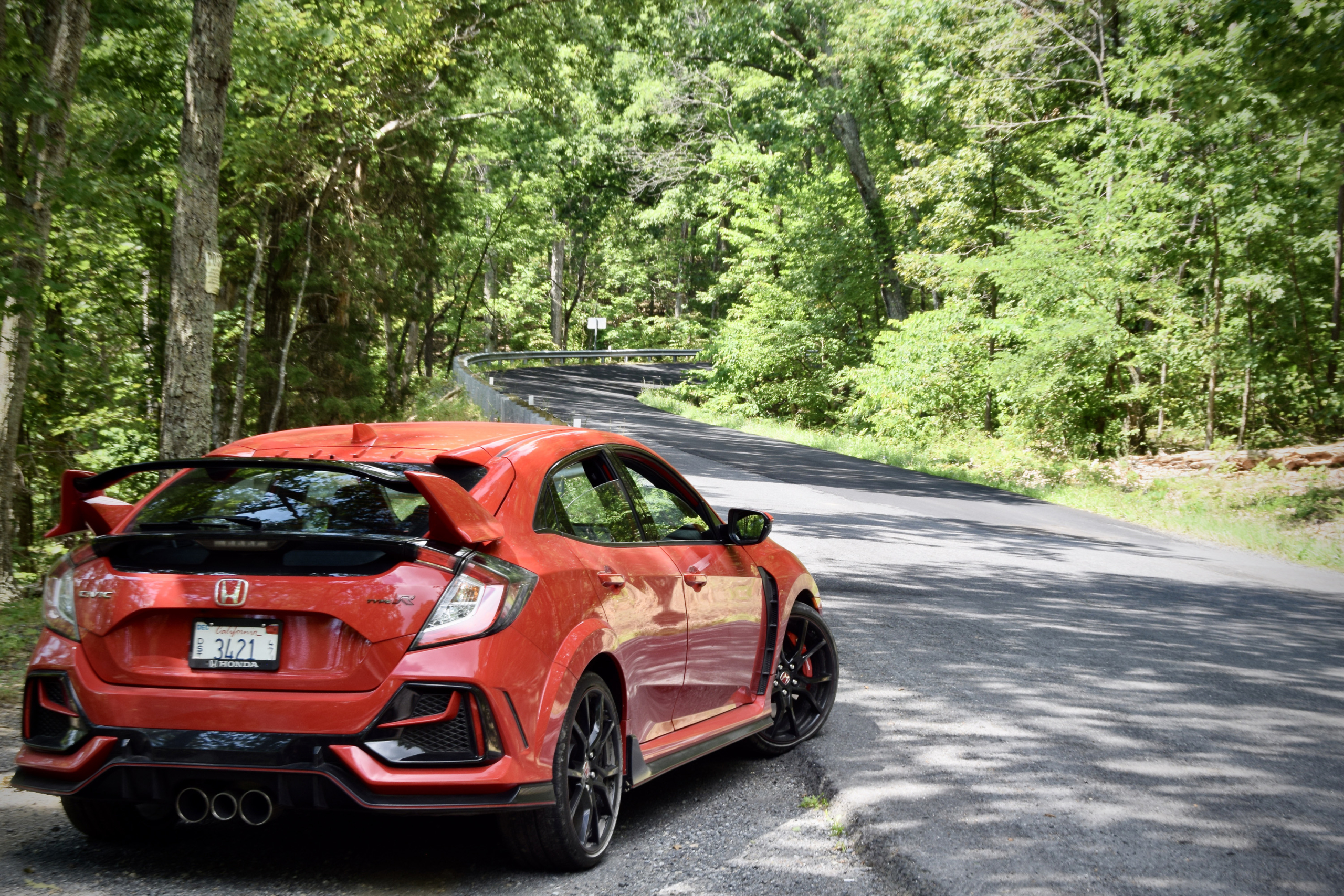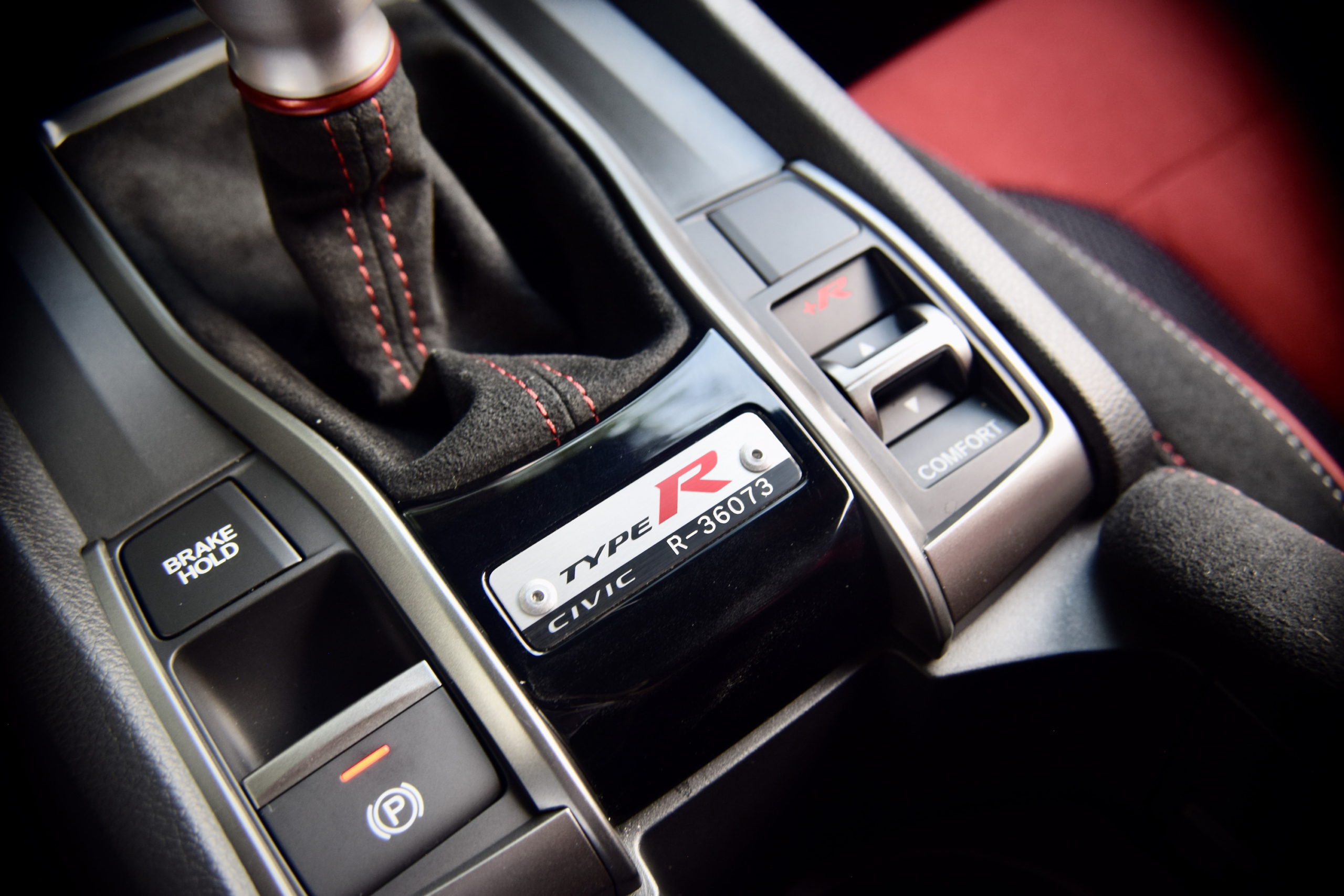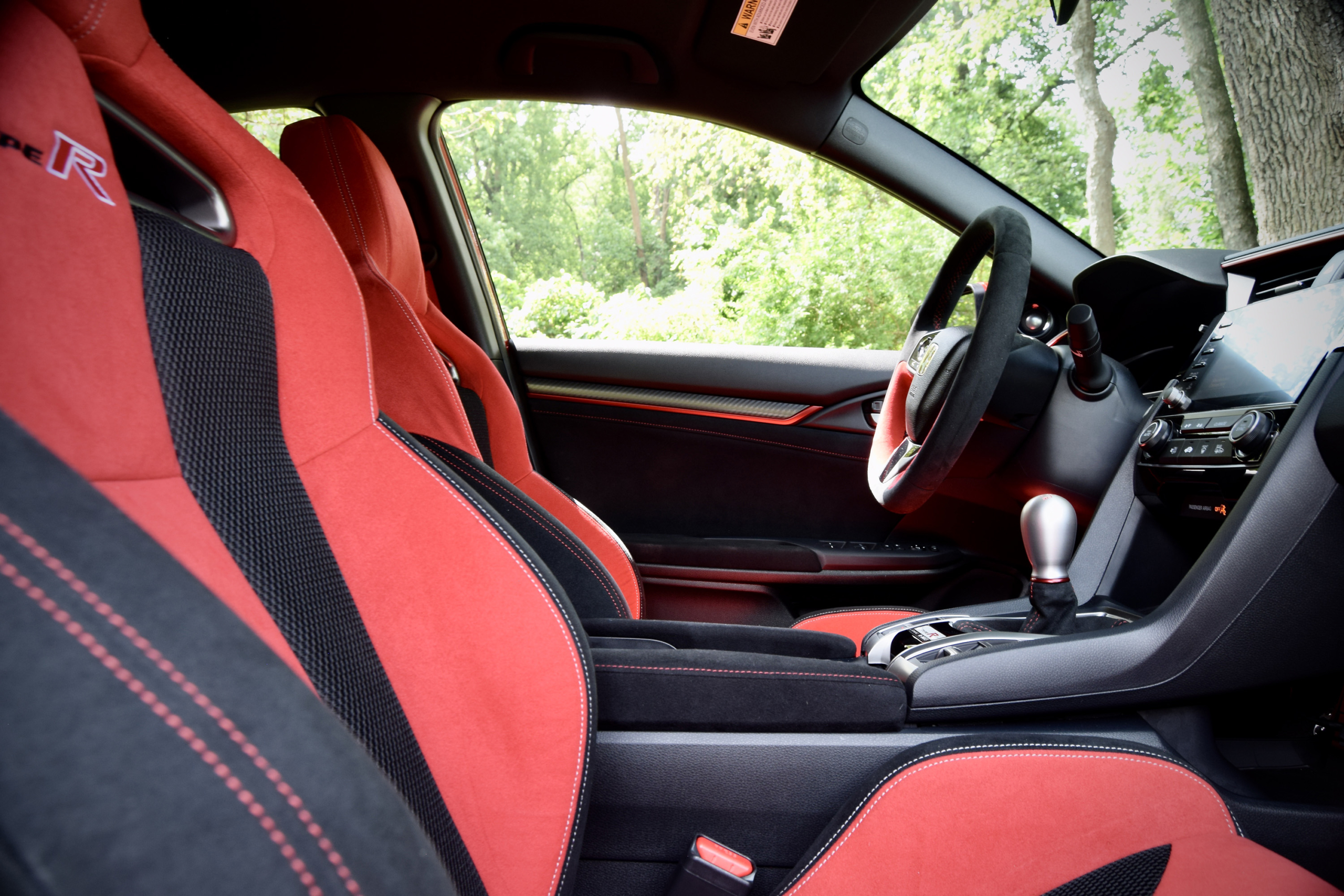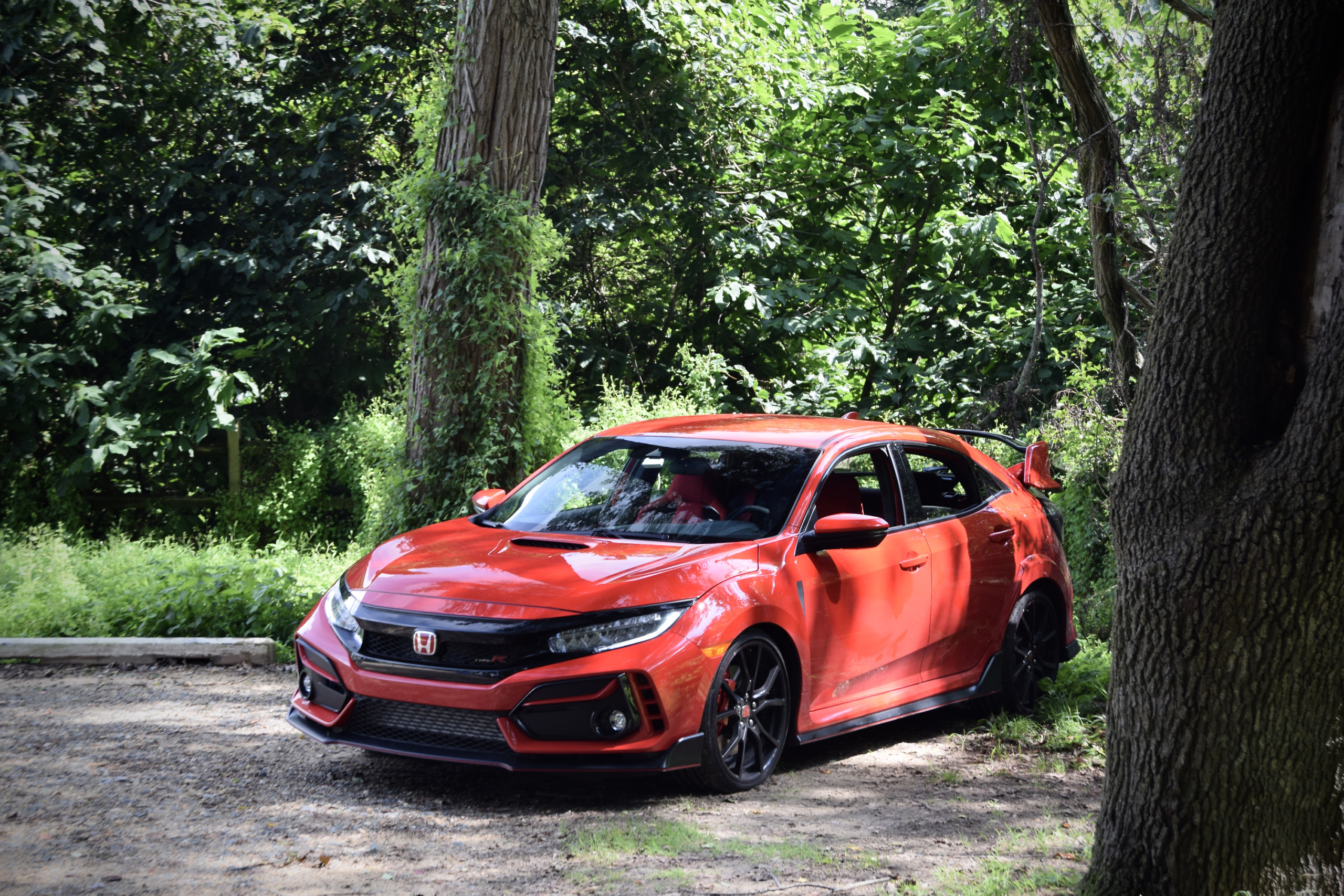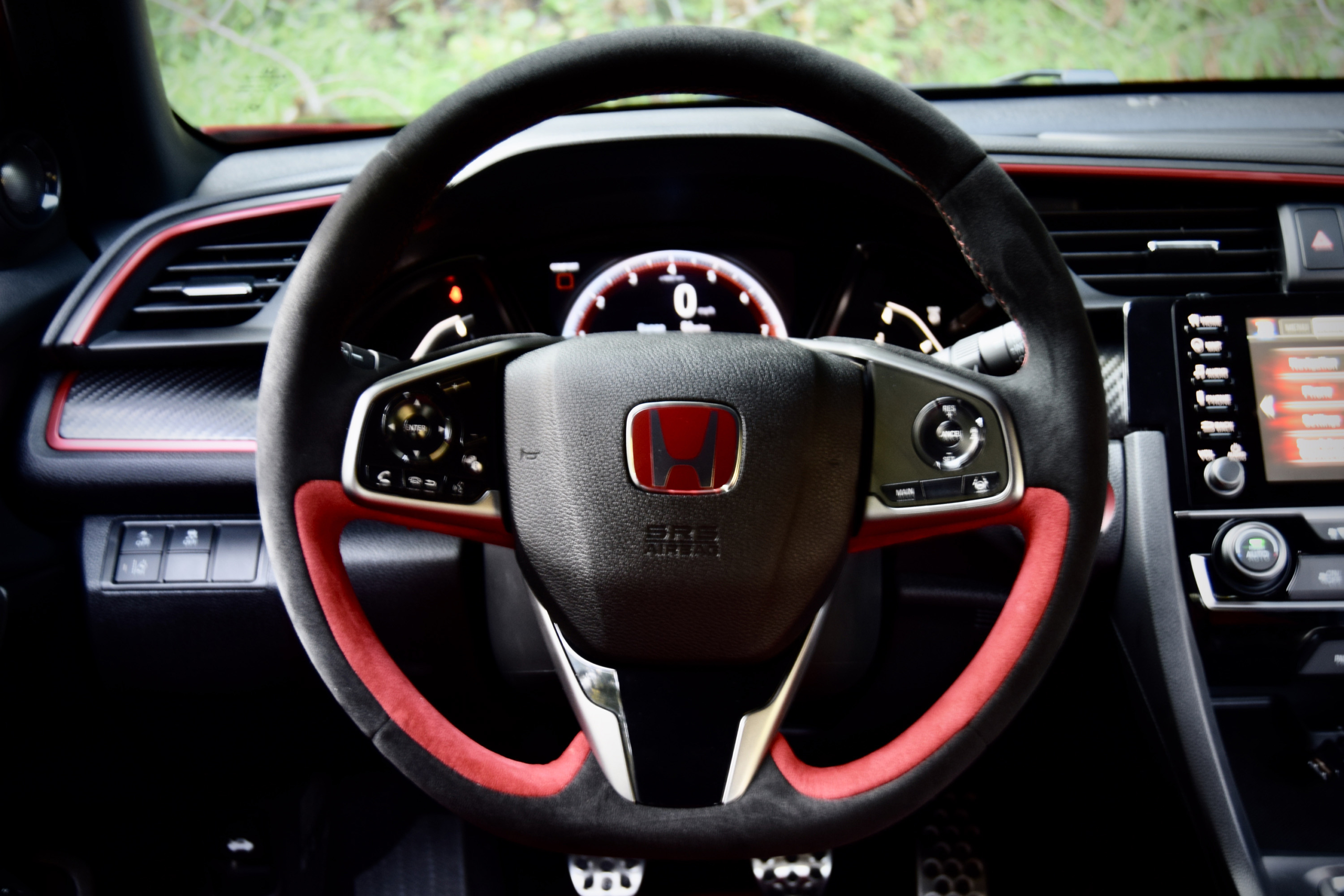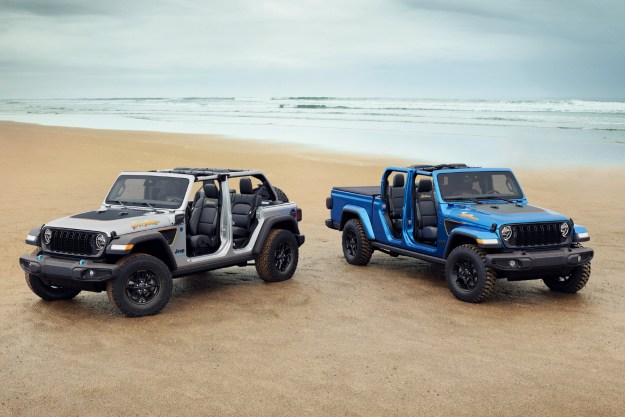There’s really only one thing you need to know about the 2020 Honda Civic Type R. Flip through the central display in the instrument cluster and you’ll find a G Meter that maxes out at 1.2 g’s. That isn’t a random figure that you’ll never be able to hit. I found that much out while attacking a 28-mile stretch of road that carves through George Washington National Forest. With a brave right foot and the right corner, the g’s build rapidly. The knot in my stomach coincides with the 1 g graphic. If you want the other 0.2, you’ll have to be braver and better at driving than I am.
In Car & Driver’s testing, the Type R hit 1.02 g’s during its skidpad testing. That, according to the outlet’s testing, is better than a 2015 Nissan GT-R that managed 0.95 g. Think about that for a second. A front-wheel-drive hatchback with room for up to four, a massive trunk, and a Honda badge can handle more ferociously than a $90,000 (when new) all-wheel-drive supercar. Such is the insanity of Type R. The fact that even a pleb like myself can get close to that limit on public roads is an even larger testament to the hatchback’s capabilities.
Modern hot hatchbacks have graduated from being peppy, easy-to-drive vehicles to all-wheel-drive monsters with enough high-tech wizardry to make decade-old supercars look crude. Somewhere along the path, things got diluted. Sure, the number of hatchbacks with Drift Mode skyrocketed and the high-tech all-wheel-drive systems make drivers feel like they had engaged God mode. But the essence, the pure driving enjoyment, that hot hatchbacks were once all about dissolved.
A Shakespearean tragedy? Only for the enthusiasts that miss the likes of the Ford Fiesta ST, Ford Focus ST, Mazdaspeed 3, Fiat 500 Abarth, and the soon-to-be-dead Hyundai Elantra GT. Lightweight, fun hatchbacks with monstrous engines and drive going to the front wheels is an old-school recipe that modern automakers simply don’t offer a lot of. It’s a shame, because Honda’s firecracker of a hatchback reveals that doing things the old way is just better.
From the first time you slide into the Civic Type R’s snug bucket seats, slot the tight gearbox into first, and push the start-stop button, you get this overwhelming feeling of how special this car is. The faux-suede steering wheel, serial number plaque, metal shift knob, and metal pedals certainly help with that sensation, but one can’t help but be in awe of the extreme measures Honda took to take a regular Civic and transform it into the brute that is the Civic Type R.
Magic, unicorn tears, fairies, letters to Santa? Maybe it was a combination of all of them, but in actuality, what really makes the Civic Type R so special is good engineering from what I can only believe to be a spirited group of engineers. This hatchback feels more special than a supercar because Honda paid attention to the small things. See that new shift knob on the 2020 Civic Type R? Well, it’s 90 grams heavier than last year’s knob and was added to provide a more satisfying feel. That’s it. There’s no real quantifiable reason for the change. Honda thought it felt better. I can’t remember the last time an automaker made a change to a vehicle this small because it made an aspect of a car feel better. It’s unheard of and it’s the kind of level of attention we’re talking about with the Type R.
It’s that insane level of attention that makes the Type R one of the sharpest, most enjoyable cars on sale today, bar none, full stop. To see and, more importantly, feel just how much of a driver’s car the Type R really is, I headed west to a road nestled deep in the George Washington National Forest. Originally, the infamous Skyline Drive that runs through Shenandoah National Park came to mind as the perfect testing ground for the Type R. But a quick internet search found that the road is heavily patrolled and the speed limit is a strict 35 mph all the way down. The views may be magnificent, but keeping a car like the Type R at 35 mph on windy roads with police is a recipe for disaster.
Going on a different path proved to be the right decision. Fort Valley and Camp Roosevelt Road may not have the same number or type of corners as Skyline Drive, but they were practically deserted when we went. I’ll take a fantastic road that’s empty over a perfect one with traffic any day of the week.
On the 28-mile road, the Type R was as close to perfection as possible. From the outside, the Type R looks like a deranged psychopath that wants to murder everything in sight. Usually, something that looks like this crazy writes checks its underpinnings can’t cash. Well, in this case, the Type R’s exterior doesn’t go far enough.
There’s a sharpness to the hatchback that’s supernatural for a front-wheel-drive four-door hatchback. The level of grip is immense, unnatural, otherworldly. The large, alcantara-lined steering wheel provides immediate, near-telepathic steering inputs. Cycling through Sport and +R modes increases the weight of the steering wheel, but the feedback and directness don’t change. Look further down the road at an upcoming corner, and the Type R magically arrives carrying absurd speed.
There are three modes for the adaptive suspension system – Comfort, Sport, and +R. On roads like these, where there are bumps, imperfections, and loose gravel, Sport is the ideal choice. It’s not that +R isn’t livable, it is, but Sport is more compliant, more forgiving on real-world roads like these. Firm, yet compliant, the Type R’s suspension works wonders, ensuring you don’t get nauseous while helping the hatchback corner without nary a hint of body roll.
What’s even more impressive is the lack of torque steer or understeer. My first car, a 2003 Nissan Sentra SE-R Spec V, only had 180 horsepower, but torque steered like a madman off the line. There’s none of that nonsense here. Bury your foot into the throttle pedal out of corners or off the line, and you’ll get a slight hint of wheelspin. Around corners, you can literally feel the LSD claw away, scrounging for grip. But understeer simply doesn’t exist, neither does torque steer. It’s incredible.
The first 15 miles of the route slice through the forest before turning into a hill climb. The Type R doesn’t miss a beat, even when the road goes from smooth and flowing to tight with nothing but hairpins. While the handling is extraordinary – it’s truly stupendous – the engine is a monster in its own right. The turbocharged 2.0-liter four-cylinder makes a stout 306 horsepower and pulls like it’s possessed. At 2,500 rpm, the turbo kicks in with violent ferocity and doesn’t stop pulling until 6,500 rpm. Of course, that’s not the Type R’s redline, as it will go up to 7,000 rpm in a buzz, frenzied, frantic crescendo. Get the motor into its higher limit and you’re left with a tingling sensation that’s more addicting than a wad of dip under your lip.
The gearbox itself is even more magical than the engine. Short, precise throws with a reassuring click for every shift. Honda’s done it again with one of the better shifters on the market. You find yourself getting in a rhythm on an excellent road. Second, floor the throttle to get into third, a stab of the superb, firm brake pedal, and back to second.
Eventually, the trees part way at the top of the mountain to reveal a stunning view. We pull over to admire the incredible stretch of road that we just covered, and the vista. The thing about the Type R is that it’s a Shun Japanese knife around corners and a comfortable cruiser for four on the highway. It outhandles sports cars that cost twice as much, while having enough space for the entire family and a massive cargo area that can hold stuff from Ikea. It’s brilliant. You’re even getting an extensive suite of advanced safety features, which can be turned off by pushing a few buttons on/near the steering wheel – not scrolling through multiple menus.
Cars like the Type R were built for these kinds of roads. It feels like the kind of car that only comes around once in a decade. It’s relatively high price tag, red-only interior, and absurd, yet fully functional interior means it won’t appeal to everyone. That’s not a bad thing. The Type R is only for hardcore enthusiasts. The ones that have yearned for a red-badged Honda in the states for years. It’s loud, not from the exhaust, but from tire noise, inefficient (we only got 26 mpg over 1,000 miles on premium fuel), and has enough grip to bring up last night’s meal. It’s not a car for the faint of heart, nor is it a car that’s easy to drive quickly. Trust, practice, feeling, it’s how you get the Type R to dance. And when it does, it’s a sight to behold.
Once at the bottom of the mountain, I take a breather. The way the Type R corners is hard, difficult to maintain. It’s so capable around corners, it almost takes your breath away. All of this from a freaking Honda. We make a U-turn to go back up. Five hours of driving to tackle these epic roads twice was still worth it, but only because we brought a Type R. This time, I know exactly how capable the Type R is, so I push even harder.
People talk about getting racecars for the road. The Type R is as close as you’ll probably ever get to getting a front-wheel-drive racer for road use. In fact, Honda should sell this thing with gloves, a helmet, and a stern warning on how real that 1.2 g meter is.

